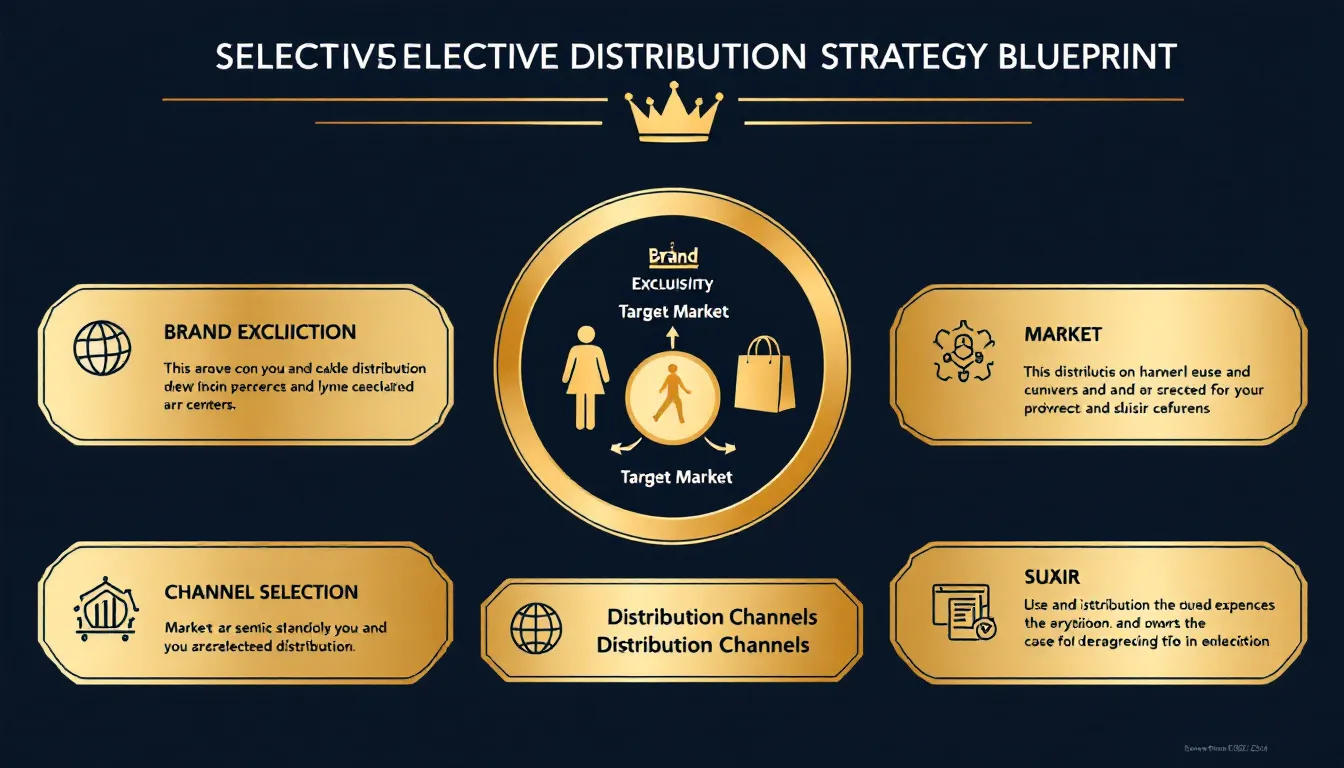Is this tool helpful?
How to Use the Selective Distribution Strategy Generator
To effectively utilize this strategic distribution planning tool, follow these steps for generating a comprehensive selective distribution strategy:
- Enter your brand name (e.g., “Maison Elite” or “Quantum Luxe”)
- Define target market segments in detail (consider demographics, psychographics, and behavioral characteristics)
- Specify exclusivity goals that align with your brand positioning
- Optional: Include product category and current distribution channels
Field-by-Field Guide
Brand Name: Input your brand’s official name. For example:
- “Celestial Timepieces” for a luxury watch brand
- “Verde Couture” for an eco-luxury fashion label
Target Market Segments: Detail your ideal customer profiles, such as:
- “Fashion-forward professionals aged 25-40 in metropolitan areas, with annual income >$150,000, interested in sustainable luxury”
- “Ultra-high-net-worth individuals aged 45-65, art collectors, frequent luxury travelers”
Exclusivity Goals: Outline your brand’s exclusivity objectives:
- “Maintain limited availability through 10 flagship stores in global fashion capitals”
- “Create invite-only purchase opportunities for signature collections”
Understanding Selective Distribution Strategy Generation
A selective distribution strategy is a sophisticated approach to maintaining brand prestige while ensuring optimal market penetration. This tool generates tailored distribution strategies that balance exclusivity with accessibility, considering multiple factors including:
- Market positioning
- Brand equity preservation
- Target audience accessibility
- Geographic optimization
- Channel selection criteria
Strategic Components Analysis
The generator evaluates multiple distribution components:
- Channel density optimization
- Geographic distribution patterns
- Partner selection criteria
- Market coverage requirements
- Service level specifications
Benefits of Using the Distribution Strategy Generator
Implementing a tool-generated selective distribution strategy offers numerous advantages:
1. Strategic Precision
- Data-driven channel selection
- Optimal market coverage planning
- Balanced exclusivity maintenance
2. Brand Value Enhancement
- Controlled market presence
- Enhanced brand perception
- Consistent luxury positioning
3. Operational Efficiency
- Streamlined partner selection
- Resource optimization
- Improved inventory management
Addressing Market Challenges
The generator specifically addresses common distribution challenges:
Market Penetration vs. Exclusivity
The tool balances market reach with brand exclusivity through:
- Calculated distribution density
- Strategic location selection
- Partner quality assessment
Channel Conflict Management
Mitigates potential channel conflicts through:
- Territory definition
- Price level maintenance
- Service standard alignment
Practical Applications and Use Cases
Luxury Fashion Brand Example
Brand: Artisan Elegance
- Target: High-net-worth individuals aged 30-50
- Strategy: Limited boutique network in premium locations
- Outcome: Enhanced brand perception and controlled market presence
Premium Technology Brand Example
Brand: Nova Tech
- Target: Tech-savvy professionals aged 25-45
- Strategy: Authorized dealer network with strict criteria
- Outcome: Maintained product value and service quality
Best Practices for Implementation
Channel Selection Criteria
- Location analysis
- Partner financial stability
- Service capability assessment
- Brand alignment evaluation
Performance Monitoring
- Sales volume tracking
- Brand perception metrics
- Customer satisfaction measurement
- Market coverage assessment
Frequently Asked Questions
What makes a selective distribution strategy effective?
An effective selective distribution strategy balances market presence with brand exclusivity while ensuring proper customer service levels and maintaining brand value.
How often should distribution strategies be reviewed?
Distribution strategies should be reviewed quarterly for tactical adjustments and annually for strategic alignment with market conditions and brand objectives.
Can selective distribution work for different product categories?
Yes, selective distribution can be adapted for various premium and luxury product categories, from fashion to technology, with appropriate customization of channel criteria and market coverage.
What role does location play in selective distribution?
Location is crucial in selective distribution, influencing brand perception, target market accessibility, and overall distribution effectiveness.
How does selective distribution impact brand value?
Selective distribution helps maintain brand value by controlling product availability, ensuring service quality, and creating an exclusive shopping experience.
Should online channels be included in selective distribution?
Online channels can be integrated into selective distribution strategies when properly managed to maintain exclusivity and brand positioning.
Advanced Strategy Considerations
Digital Integration
Consider these aspects when incorporating digital channels:
- E-commerce platform selection
- Online-offline integration
- Digital experience optimization
- Virtual exclusivity maintenance
Market Expansion Planning
For strategic market expansion, evaluate:
- Geographic prioritization
- Partner network development
- Local market adaptation
- Resource allocation optimization
Important Disclaimer
The calculations, results, and content provided by our tools are not guaranteed to be accurate, complete, or reliable. Users are responsible for verifying and interpreting the results. Our content and tools may contain errors, biases, or inconsistencies. We reserve the right to save inputs and outputs from our tools for the purposes of error debugging, bias identification, and performance improvement. External companies providing AI models used in our tools may also save and process data in accordance with their own policies. By using our tools, you consent to this data collection and processing. We reserve the right to limit the usage of our tools based on current usability factors. By using our tools, you acknowledge that you have read, understood, and agreed to this disclaimer. You accept the inherent risks and limitations associated with the use of our tools and services.







